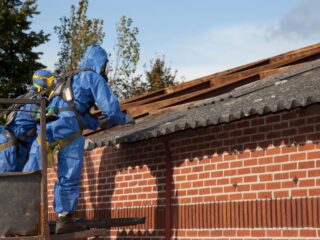
After a night of relentless rain, you step outside to find large puddles gathered against the walls of your home. It’s not just inconvenient—it’s a warning sign. Water that doesn’t drain properly can lead to erosion, damage to foundations, and even dampness creeping indoors if it’s left unresolved.
There are several factors that contribute to water pooling. Blocked drains, compacted soil, and even the way your garden is landscaped can all play a role. In some cases, overgrown shrubs and tangled roots prevent proper water flow, which is why targeted vegetation removal can be part of the solution. The key is figuring out what’s causing the problem before the next storm arrives.
If pooling has become a regular issue on your property, the good news is you don’t need to overhaul everything. Small, strategic changes can make a big difference.
Assess the Grading Around Your Home
Your yard should gently slope away from your home so that water naturally drains outwards. When the ground settles over time or landscaping projects disrupt the slope, water collects near the base of your walls. Walk around after rain to see where the low points are, then:
- Add soil to create a gradual slope
- Build shallow channels or swales to direct water away
- Avoid piling mulch or garden beds directly against the house
Even a small improvement in grading can prevent water from lingering.
Clear Gutters and Downpipes
Overflowing gutters are one of the most common causes of pooling water. When they’re packed with leaves and debris, water spills over the edge and soaks the ground below.

Regularly cleaning gutters and checking downpipes for blockages ensures rainfall is directed well away from your home.
Improve Soil Drainage
Heavy, compacted soils, especially clay‑based ones, struggle to absorb water. Over time, this leads to water sitting on the surface after storms. To fix this:
- Aerate lawns to allow water to soak in
- Incorporate organic matter like compost into garden beds
- Install drainage solutions such as French drains if certain areas remain waterlogged
These steps let the ground handle more water before it becomes a problem.
Manage Runoff From Hard Surfaces
Driveways, patios, and pathways can send large volumes of water straight towards your home if they aren’t properly designed. Installing channel drains, choosing permeable paving materials, or adding edging that diverts water to a garden bed can stop runoff from overwhelming your drainage system.
Maintain Plants and Trees Strategically
While greenery is important for preventing erosion and absorbing water, plants too close to drains or foundations can create barriers or clog pipes with roots. Prune regularly and avoid planting large species near critical drainage areas. Keeping garden beds tidy and leaf‑free also reduces the debris that ends up in your gutters.
Monitor During Heavy Rain
When a storm is forecast, take a walk around your property during or after rainfall. Watch where water collects, flows, or backs up. This gives you real‑time information to guide your next steps, whether that’s adding a drain, reshaping soil, or trimming problem vegetation.
A Little Prevention Goes a Long Way
Pooling water doesn’t just go away on its own—it often gets worse over time. By paying attention to how water moves around your home and making small, practical changes, you can protect your property and enjoy a safer, drier outdoor space. A well‑managed yard doesn’t just look better; it actively works to shield your home from the damage heavy rain can bring.



